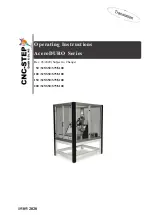
Chapter 3
Basic QoS Concepts
E-NIT-CTC-20041213-0013 v0.5
19
Differentiated Services
domain
A DiffServ domain consists of a set of DiffServ nodes which can provide the
common service and which have a set of PHBs implemented on each node. The
DiffServ domain has two types of nodes:
boundary nodes at the edges of the domain
interior nodes inside of the domain.
The boundary nodes are the access routers and edge routers that directly peer with
customers (either individual users or other ISPs).
Interior nodes only connect to other interior nodes or boundary nodes within the
same DiffServ domain.
Both DiffServ node types must be able to apply the appropriate PHB to packets,
according to the DSCP. The boundary nodes are required to perform traffic
conditioning functionality when the functionality of the interior nodes may be limited.
Boundary nodes act both as DiffServ ingress and DiffServ egress node, depending on
the direction of the traffic.
In practice this means that the boundary node makes sure that the TOS/DSCP byte is
set correctly.
as boundary node
Router at ISP as
interior node
SpeedTouch™
Summary of Contents for IPQoS
Page 2: ......
Page 3: ...SpeedTouch IPQoS Configuration Guide R5 3 0 ...
Page 8: ...Contents E NIT CTC 20041213 0013 v0 5 6 ...
Page 10: ...About this IPQoS Configuration Guide E NIT CTC 20041213 0013 v0 5 8 ...
Page 12: ...Chapter 1 Document scope E NIT CTC 20041213 0013 v0 5 10 ...
Page 116: ...Chapter 8 Scenario 2 Business user with TOS marking E NIT CTC 20041213 0013 v0 5 114 ...
Page 120: ...Reference List E NIT CTC 20041213 0013 v0 5 118 ...
Page 122: ...Abreviation List E NIT CTC 20041213 0013 v0 5 120 ...
Page 123: ......
















































